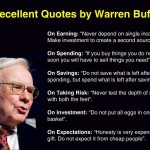
The three are Align Technology, Editas Medicine and Nvidia, a pretty diverse sampling of current stock leaders. They are fast growing, with Align soaring some 50 percent so far this year. Editas is up by 30 percent and Nvidia 20 percent.
The three very different companies have something in common. Each is a leader in its genre. Align is dominating a clear dental aligner market. Editas is pioneering technology in CRISPR gene editing and Nvidia is booming with new approaches to production of chips for artificial intelligence, cryptocurrency mining and gaming. With a fixed focus, each of the companies is thriving in its corner of the market.
Align has developed a product and then created mass customization processes so that tens of thousands of Invisalign clear aligners can be produced and adapted specifically for a particular patient. They are shipped all over the country every day.
Although several biotech companies focus on gene editing, Editas has created its own niche targeting Leber congenital amaurosis type 10, the leading cause of blindness in children. Editas has several patents for its CRISPR processing gene editing used to treat the genetic blindness., as well as other genetic diseases.
Nvidia set the standard for powering gaming applications years ago with its graphics processing units. Turns out the GPUs created for gaming also could be used for running Al and cryptocurrency mining software. Nvidia has many would-be competitors, but to date leads the pack in the field.
Among the similarities they share is huge market opportunities. Each is making inroads into markets that have not been tapped out. Editas is the only company that offers treatment for LCA type 10 or several other genetic diseases that are being targeted for biotech remedies. The potential for years of amplifying their approach appears almost endless.
Align also has a rosy future. At present, the company claims just 12 percent of the possible market and less than 5 percent of the teen orthodontic market. That leaves plenty of room for expansion. Research that will allow for treatment of the most severe cases of tooth misalignment is expected to lead to 40 percent expansion in the next few years.
Nvidia’s prospects likewise appear to be unlimited. How much the Al market will grow is unpredictable, but prospects are for a much bigger market in the future. Continued predictions of growth in gaming, particularly in the areas of augmented reality and virtual reality all point to continuing success.
All three of these leading stocks are expensive and growing based almost solely on future prospects rather than current productivity.
Should you buy expensive stocks in high-growth markets? Not necessarily. The market has many examples of stocks with similar promise that have not performed as well as expected. And some of stocks that don’t meet the same criteria that have done unexpectedly well.
It’s the nature of playing the stock market.



